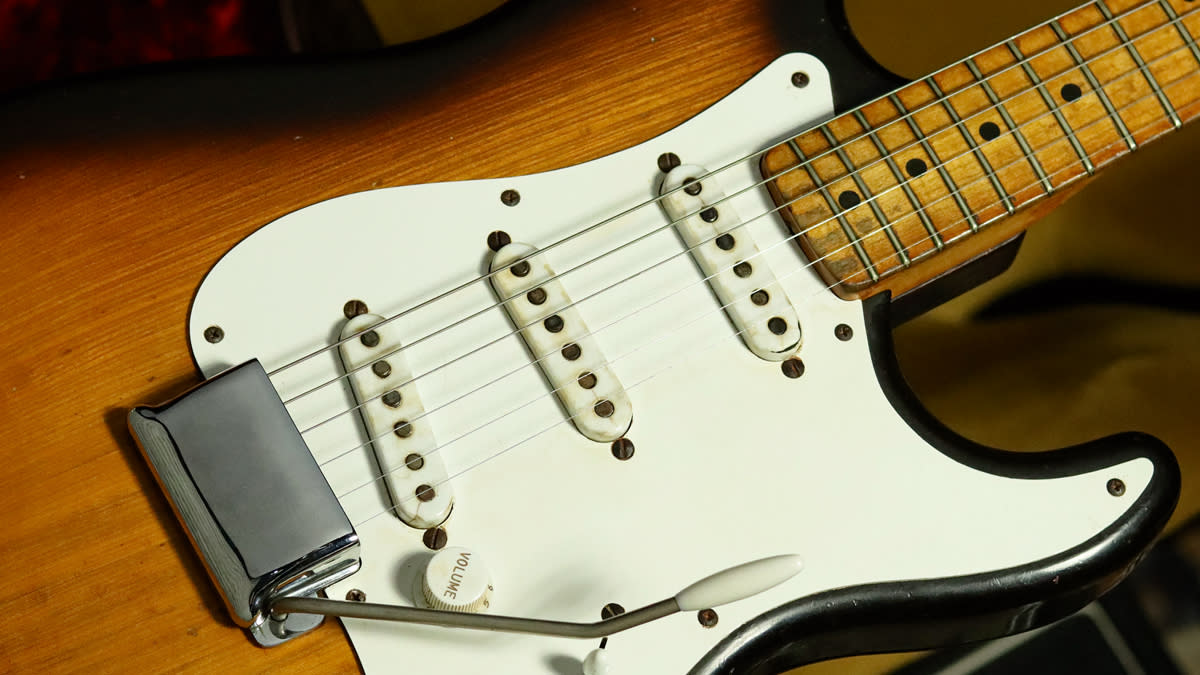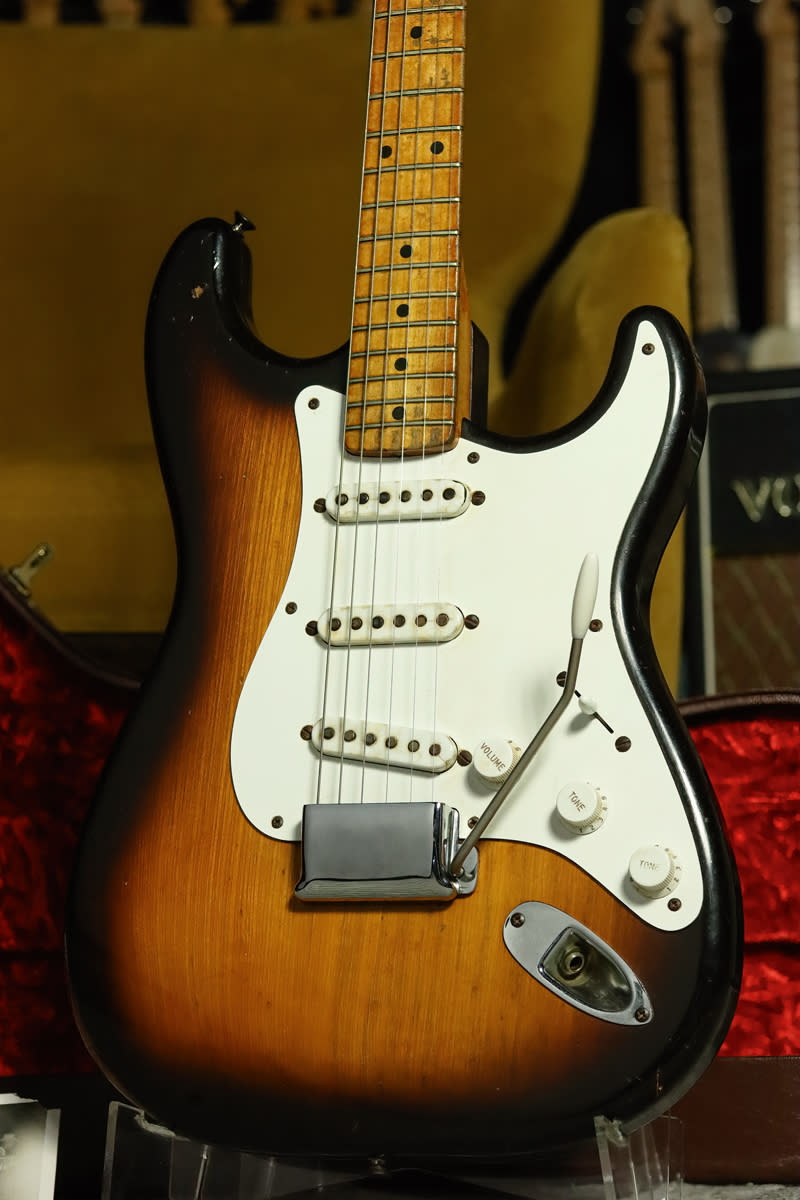“I had to drive several hours through snow to get to him. He told me this was one of the first Stratocasters, and there were some things I noticed immediately”: This 1954 Fender Stratocaster is one of the most unusual Fender builds in history

This is a 1954 Fender Stratocaster and it’s the earliest Strat build that I’ve ever seen. It’s a very special guitar. It does not have a serial number on the vibrato cover [as standard on early 1954 Stratocasters]; it has a regular neckplate serial number.
However, we know Stratocasters were not built in a special order, and we also know many of the earliest ones were sent back to Fender for some reworking. If you read books and talk to people, you’ll hear that a lot of the early Strats have the serial number on the back cover, not on the neckplate. But this guitar is a great example that proves the theory that serial numbers were random.
This Stratocaster was owned by a guy called Bill Wesley and there’s a letter from him I got in 2005 that reads: ‘I bought it in Houston right from the Fender rep on a Saturday. I waited around the store until 3pm. They wanted to show it to people in the store that day as it was something brand new…
Over the years, I played it with a lot of different people such as Hank Locklin, Moon Mullican… I remember working with Ernest Tubb as well with this guitar… I eventually offered [the Fender rep] way above the initial price, which I believe was about $240.” He also sent many photos of himself in cowboy gear from the ‘50s all the way through to the ‘70s.
In November 2005, I had to fly to Calgary, Alberta, where Bill was living, to get the guitar. He lived nowhere near the airport, so I had to drive several hours through snow to get to him. He had told me this was one of the first Stratocasters and, though you couldn’t tell much from the original 35mm photographs he had sent, when I saw the guitar in the flesh there were some things I noticed immediately.
It has some really interesting, cool features: there’s a step between the nut and the plug; the pickup polepieces are much larger than standard; there are some slot-head screws present on the pickguard; and the potentiometers are very large. These pots are actually television potentiometers and they’re dated 1953.
Interestingly enough, they are 100k[ohms] and measure 1¾ inches in diameter, which means the body cavity is much larger – underneath the pickguard – than normal. The body is quarter-sawn ash that almost looks like spruce. At 8.5lbs, it’s very heavy, like the earliest bodies often are. My early trem-cover [serial number] Stratocasters are heavy, also.

Like I said, a lot of the early Stratocasters have a serial number [engraved] on the back cover, and this one just has a regular neckplate, but it’s got a neckplate serial of a guitar that could have been built in May [1954]. So, it’s probably a guitar that was sent back for rework at Fender, like a lot of early ’54s were.
The neck date is January 1954. I’ve never seen anything prior to March ’54 before, so this really is one of the first ever made. The headstock is very thin, and it has that step near the nut, which, I believe, is a reinforcement to help stop the peghead pulling forward under tension.
It’s really got a lot of prototype features. It’s very unusual to see Strats with slot-head screws used to hold and adjust the height of each pickup, and also to hold the three-way pickup selector switch. Those slot-head screws are original to the guitar.

It plays well for an early Stratocaster. This particular guitar has been refretted and the nut is new. Otherwise, it’s very original. There’s no broken solder and I’d never seen potentiometers like this on a Fender guitar before. They date specifically to the 41st week of 1953, which coincides with other Fender pots from this era in early ’54 guitars.
It’s maybe one of a kind in that respect – I’ve never seen another Strat with these pots. In combination with the 100k pots, the pickups sound different; it’s a little limiting in the high-end and a little more giving in the low-end. I have seen guitars with pickups that have larger polepieces, as seen here, but I’ve never seen a neck this early, nor one with a step by the nut.
The neck date is January ’54, but the body date is March ’54, which is a normal gap for Fender guitars. They probably made a bunch of bodies and attached this neck that was already made, and it just happened to be one of the earliest ones. The neck and body have always been together because the transfer [lacquer marking] is perfect. It’s very unique and definitely one of the most unusual Strats I’ve ever seen.”
Vintage guitar veteran David Davidson owns Well Strung Guitars in Farmingdale, New York

